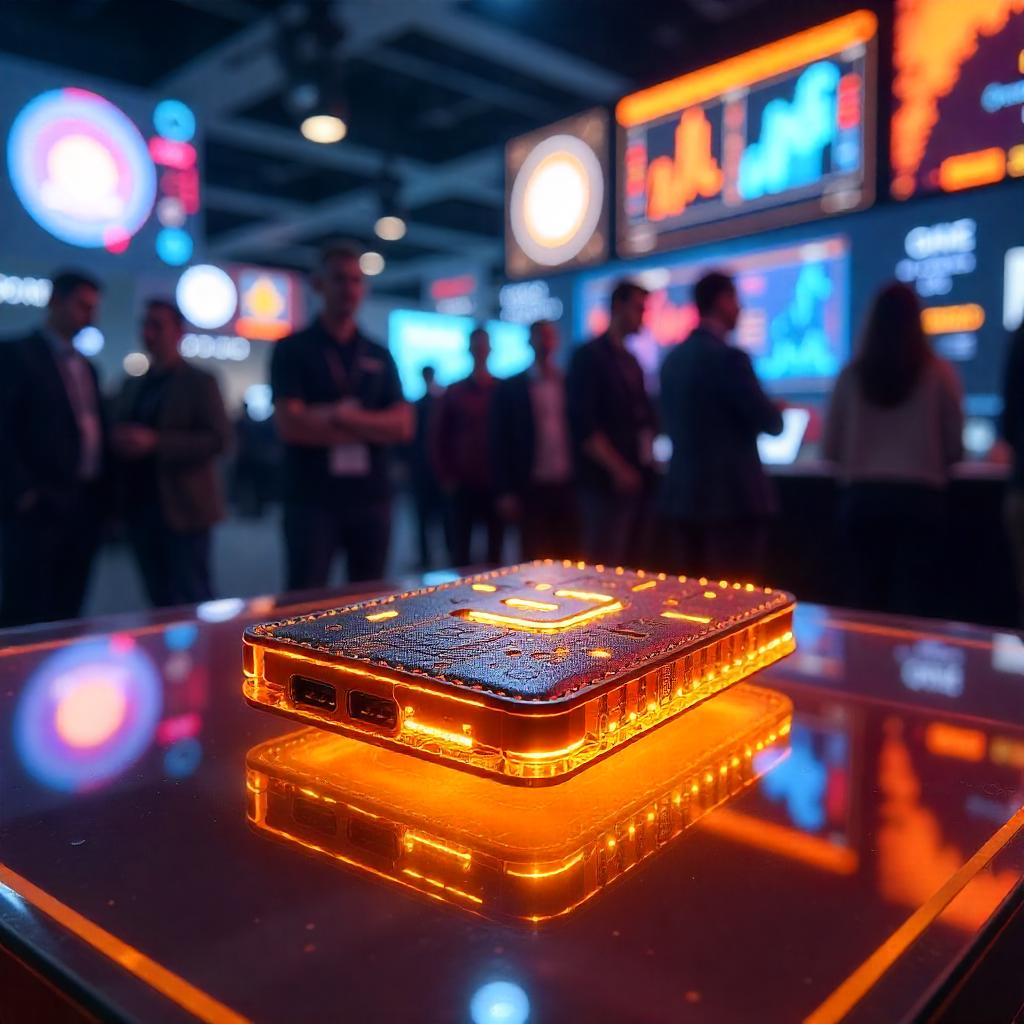The concept of “decentralization” is often highlighted as a core tenet of blockchain technology, but its meaning and implications can be elusive for newcomers. This article aims to demystify decentralization, explaining what it truly means in the context of blockchain, how it works, and its broader impact beyond cryptocurrencies.
Decentralization means distributing control and decision-making away from a central entity (like a single company, government, or individual) across a network. Instead of one powerful authority dictating terms, many participants collectively maintain and govern the system.
Summary
- Decentralization in Everyday Life
- Blockchain: What is Being Decentralized?
- Visualizing Blockchain's Decentralization
- Centralized vs. Decentralized Databases
- Beyond the Database: A Broader Decentralization
- Decentralization vs. Local Networks
- Other Decentralized Technologies and Tools
- Participating in Blockchain Decentralization
- The Advantage Over Data Centers
- Decentralization: Enhanced Security and Privacy?
Decentralization in Everyday Life
To grasp decentralization, consider these familiar analogies:
- The Internet (Early Days): While the internet as a whole has centralized aspects today (e.g., Google, Amazon servers), its foundational design was decentralized. If one server went down, the entire network didn’t collapse. Information could route through many paths, making it resilient to single points of failure.
- Torrents (Peer-to-Peer File Sharing): When you download a file via torrents, you’re not getting it from a single server. Instead, pieces of the file come from many different users (peers) who are also sharing parts of the file. No single entity controls the distribution; it’s a collective effort. This mirrors how data is distributed across a blockchain network, where many participants hold copies and contribute to its operation.
Blockchain: What is Being Decentralized?
In the context of blockchain, what is primarily being decentralized is the control and management of a database or ledger. Clearly, this means:
- Data Storage: Instead of a single server holding all the information, copies of the ledger are distributed across numerous independent computers (nodes) worldwide.
- Decision-Making & Governance: Changes to the system’s rules or the validation of new entries are not decided by a central authority but through a consensus mechanism agreed upon by the network participants.
- Operation & Maintenance: The network’s functionality and security are maintained by many independent actors, not a central IT department.
Visualizing Blockchain’s Decentralization
Imagine a traditional bank where all transaction records are stored on a single, powerful server in their data center. If that server goes down, is hacked, or if the bank decides to alter records, it affects everyone.
Now, visualize a blockchain like a vast, global digital ledger. Instead of one bank holding this ledger, imagine thousands of independent accountants around the world, each with an identical copy of the entire ledger.
- No Single Boss: There’s no head office telling them what to do.
- Collective Agreement: When a new transaction occurs (e.g., Alice sends Bitcoin to Bob), it’s broadcast to all these accountants. They all verify the transaction independently.
- Adding New Pages: Once a set of transactions is verified, they collectively agree to add a new “page” (a block) to their identical ledgers.
- Immutable History: Once a page is added, it’s virtually impossible for any single accountant, or even a small group, to go back and change an entry on a previous page without the other thousands of accountants immediately detecting the discrepancy and rejecting the altered copy.
This distributed and independently verified system is how blockchain achieves its decentralization. The “database” of the blockchain is indeed this shared, replicated ledger across all participating nodes.
Centralized vs. Decentralized Databases
The key difference lies in control and architecture:
Centralized Database (Classic Database)
- Single Point of Control: Owned and managed by one entity (e.g., a bank, a company, a government).
- Single Point of Failure: If the central server or system fails, the entire database becomes inaccessible or compromised.
- Permissioned Access: The owner dictates who can access or modify data.
- Vulnerable to Censorship: The owner can choose to block or alter data.
Example: Your bank account balance held on the bank’s servers, or user data stored by a social media company.
Decentralized Database (Blockchain)
- Distributed Control: No single entity owns or manages the entire database. It’s collectively maintained.
- No Single Point of Failure: Even if many nodes go offline, the network can continue to operate as long as a sufficient number of nodes remain active.
- Permissionless (often): Anyone can typically join the network and contribute to maintaining the database (though specific rules apply).
- Resistant to Censorship: Difficult for any single entity to block or alter data without the network’s consensus.
Example: The Bitcoin blockchain ledger, where every full node has a copy of all transactions since its inception.

Beyond the Database: A Broader Decentralization
The term “decentralized” in blockchain refers to more than just the database. It extends to several layers of the system:
- Decentralized Network: The computers (nodes) that host and maintain the blockchain are geographically dispersed and independently operated.
- Decentralized Governance: Decisions about how the blockchain evolves (e.g., protocol upgrades, rule changes) are often made through a distributed consensus mechanism, not by a central committee.
- Decentralized Applications (dApps): Applications built on blockchains can also be decentralized, meaning their backend code and data are stored and run across the decentralized network, not on a single company’s servers.
Decentralization vs. Local Networks
While a local network (LAN) in your home allows you to share files with family without a central server, it’s not quite the same scale or intent as blockchain decentralization.
- Local Network: Limited scope (your home), typically controlled by one household/router. Trust is inherent among family members.
- Blockchain Decentralization: Global scale, involves thousands of independent, often untrusted participants. The system is designed to establish trust without a central authority, through cryptographic proofs and consensus mechanisms.
So, while both involve distributed access, the scale, trust assumptions, and security mechanisms are fundamentally different.
Other Decentralized Technologies and Tools
Blockchain offers a unique form of decentralized immutability; however, other technologies and concepts have embraced decentralization:
- Email (SMTP protocol): While you might use a centralized provider like Gmail, the underlying SMTP protocol for email transfer is decentralized. Emails travel between mail servers operated by different entities.
- Domain Name System (DNS): When you type a website address, DNS translates it into an IP address. This system is decentralized across many domain name servers globally, ensuring that if one server goes down, the internet doesn’t stop working.
- Git (Version Control): Used by developers, Git allows multiple people to work on the same code project. Each developer has a full copy of the code repository, allowing for collaborative, decentralized development without a central master copy.
These examples illustrate that decentralization is a design principle that predates blockchain, but blockchain applied it to a transactional ledger with unprecedented security and transparency.
Participating in Blockchain Decentralization
Almost anyone can participate in blockchain decentralization even if the method and requirements vary:
- Running a Node: The most direct way is to run a “full node” for a blockchain like Bitcoin or Ethereum. This involves downloading the entire blockchain history (which can be terabytes of data), dedicating computational resources, and maintaining an internet connection.
- Restrictions/Conditions: Requires a computer with sufficient storage and bandwidth. No specialized hardware is needed to run a full node, even if it could be a commitment. Running a full node is not the same as mining.
- Gains: You contribute to the network’s security and decentralization, verify transactions independently, and gain a direct, unfiltered view of the blockchain’s state. You typically don’t earn direct financial rewards for just running a full node (unless you’re also mining/staking).
- Mining/Staking: For certain blockchains (e.g., Bitcoin miners, Ethereum validators), participation involves dedicating significant computational power (mining) or locking up cryptocurrency (staking) to validate transactions and create new blocks.
- Restrictions/Conditions: Mining requires specialized, energy-intensive hardware (ASICs for Bitcoin). Staking requires a minimum amount of cryptocurrency and technical setup.
- Gains: Direct financial rewards in the form of new cryptocurrency and transaction fees for securing the network.
- Developing: Contributing to the open-source code of blockchain protocols or building decentralized applications.
- Gains: Influence the future of the technology, potentially build valuable applications.

The Advantage Over Data Centers
While data centers are efficient for centralized systems, decentralization offers critical advantages:
- Resilience and Uptime: A data center can fail due to power outages, cyberattacks, or natural disasters. A decentralized network, with copies spread globally, is far more resilient and difficult to take down.
- Censorship Resistance: A data center can be pressured by governments or corporations to block access to certain data or services. Decentralized networks are much harder to censor because there’s no single point of control to target.
- Trustlessness: In a centralized system, you must trust the data center operator. In a decentralized system, trust is replaced by cryptographic proofs and consensus, meaning you don’t need to trust any single party.
- Reduced Single Point of Failure: Eliminates the vulnerability of having all critical operations concentrated in one location.
Decentralization: Enhanced Security and Privacy?
Yes, decentralization generally implies more security and enhanced privacy, but it’s also crucial to understand how:
Enhanced Security
- Attack Resistance: Without a single point of failure, a decentralized network is much harder for attackers to compromise. To hack a blockchain, you’d need to control a majority of its distributed nodes, which is immensely difficult and expensive.
- Data Integrity: The cryptographic linking of blocks and the consensus mechanisms make it incredibly difficult to alter past data without detection. This guarantees the records are accurate and trustworthy.
Enhanced Privacy (Often, but with nuances)
- Pseudonymity: On many public blockchains (like Bitcoin or Ethereum), transactions are transparent, but the identities of the users behind the wallet addresses are pseudonymous. This means your transactions are visible, but your real-world identity is not directly linked unless you tie it to an exchange that performs KYC (Know Your Customer) checks.
- Resistance to Data Breaches: Since there’s no central database holding all user information, there’s no single honeypot for hackers to target for large-scale data breaches affecting personal identities.
- Control over Data (Future Potential): Decentralization allows for models where individuals have more direct control over their personal data, deciding who can access it and for how long, rather than a corporation holding it centrally. This is a key promise of Web3 and decentralized identity solutions.
It’s important to understand that while the blockchain itself offers strong security and pseudonymity, your personal practices are equally crucial. Things like using secure wallets, avoiding scams, and keeping your real identity separate from public addresses are essential for your own security and privacy in the crypto world.



